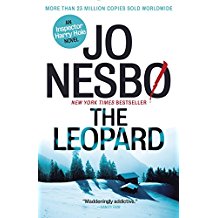


Apart from this, he has near-superhuman powers of recovery, whether from a mammoth hangover, an avalanche, or the attentions of a frenzied psychopath. He also has the requisite backstory, in the form of a lost love and a dying father with whom he has unfinished emotional business. He has a full checklist of the character requirements of the noir hero – being melancholic, alcoholic, intuitive, uncompromising, anti-authority and, although often unsanitary, astonishingly attractive to women (including his stunningly beautiful colleague Kaja, who, naturally, has a raft of problems of her own). At first glance, 610 pages might seem a little (or a lot) on the long side for what is, in essence, a serial killer/maverick cop story, but the labyrinthine plot and the large canvas (Hong Kong and Africa as well as Norway, and several points in between) justify the word-count.Īs with Nesbø's other books, all the characters, both heroes and villains, are toting phenomenal amounts of personal baggage, none more so than Hole himself. The Leopard, the sixth Harry Hole novel to be published in Britain, is a big and meaty, but easily digestible, slab of a read, ably translated by Don Bartlett.

However, those who did not appreciate Larsson's work need not fear: in both style and content, Nesbø is entirely his own man. While this label is neither intelligent nor helpful, it is probably fair to say that, in terms of both critical and commercial success, Norwegian Jo Nesbø is the writer to whom it is the most applicable. S ince The Girl With the Dragon Tattoo was published in 2008, there's been something of a Nordic noir bonanza in this country, with every new Scandinavian crime novel, whether good, bad or indifferent, being engulfed in a blizzard of hyperbole, and every author trailed as "the next Stieg Larsson".


 0 kommentar(er)
0 kommentar(er)
